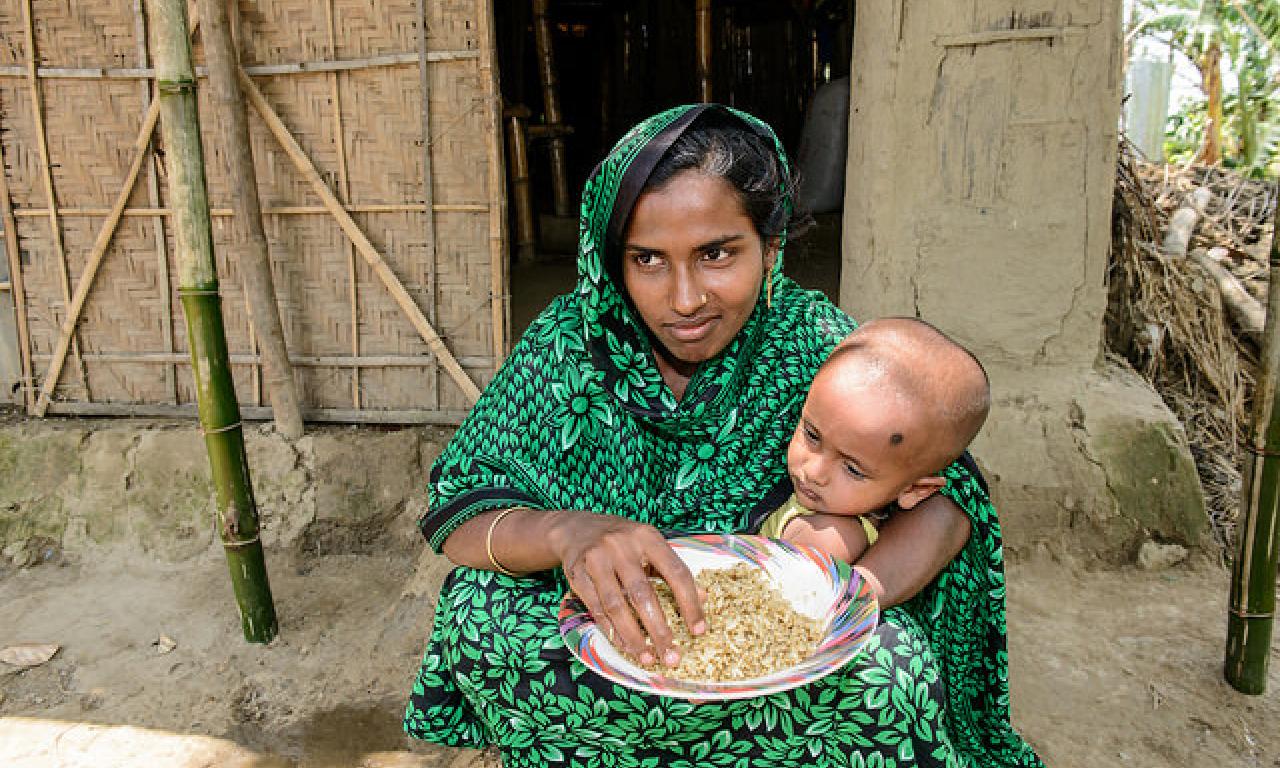
In a keynote at the CGIAR Integrated Systems Research Conference earlier this year, I suggested that researchers might look at gender as a leverage point in development. This idea comes from systems thinking, which is—in very simplest terms—a way of approaching an issue that sees the “thing being studied” as part of a larger set of elements that interact in multiple ways to shape outcomes.
Recommended publications
- Measuring gender transformative change
- Supporting gender-inclusive dialogue over natural resource management
In a keynote at the CGIAR Integrated Systems Research Conference earlier this year, I suggested that researchers might look at gender as a leverage point in development. This idea comes from systems thinking, which is—in very simplest terms—a way of approaching an issue that sees the “thing being studied” as part of a larger set of elements that interact in multiple ways to shape outcomes.
Complex systems—such as such as a community or set of communities, and the environment and economy people in those communities depend on and influence—are always in motion and they have no ‘central control’ mechanism. Rather, they change through the interactions of different elements of the system. So why are leverage points important? They matter because, to quote systems thinker Donella Meadows, they are places within a complex system “where a small shift in one thing can produce big changes in everything”.
Seeing gender as a potential leverage point means looking at improvements in gender equity and equality not only as ways to improve the welfare of women. It means seeing that enhancing gender equity and equality may have important “knock on” effects in the whole system, and much bigger implications for key development outcomes.
“Pushing on the lever” of gender-equal access to assets, for example, can leverage significant change in global food security. As FAO data illustrate, if women had equal access to resources as men, farm productivity would increase by 20-30%, which could raise total agricultural output in developing countries by 2.5–4%, which could in turn reduce the number of hungry people in the world by 12–17%.
Looked at from this perspective, gender-equal access to assets, including technologies and information, is critical to broader development goals. And yet, research and development experience has shown that efforts that focus (only) on increasing women’s access to assets may not necessarily lead to sustained outcomes and nor to substantial impact.
In other words, while a gender focus on the visible gender gaps (such as access to loans or technology) is important, it is not sufficient. Why not? Continuing with our assets example, one reason for this is because having access to assets doesn’t necessarily mean much, if a woman doesn’t also have meaningful control over how these assets are used (for example control over loans) and key capabilities (such as freedom to engage in a market place).
This raises the question: is it really improving access to assets that has the most potential to leverage wider and lasting change, or do we need to look for other, deeper “leverage points”? In other words, if we focus on equal access (only) as the entry point, are we pushing on the most effective “levers” for achieving long lasting our development outcomes?
Recent research by WorldFish and partners under the CGIAR Research Program for Aquatic Agricultural Systems (AAS) has helped to answer these questions, by developing our understanding of what these broad leverage points are, and how we might effectively push them. Specifically, recent studies from Zambia and Solomon Islands show the powerful role of gender norms (i.e., the informal rules or expectations that guide roles and behaviours of women and men) in shaping development outcomes including capacity to innovate and poverty.
In Zambia, Dr Steven Cole and colleagues’ recent study indicates that gender inequality is not a result of poverty, but rather a contributor to it. The study is a part of multi-year research with poor fish-dependent communities in the Barotse Floodplain in Zambia’s Western Province. Cole and colleagues’ work uncovers the connection of gendered norms, behaviours and relationships with the reduced economic wellbeing of households, growing numbers of female-headed households, and increasing family burdens of women. The study signals that a better understanding of the way in which these underlying informal gender-related factors influence wellbeing is critical to research and development programs being able better tackle inequalities and rural poverty in a lasting way.
Similarly, Dr Philippa Cohen and colleagues from James Cook University and Deakin University of Australia have been carrying out research in the Solomon Islands. Cohen and colleagues’ study uncovered the different social factors that help or hinder farmers and fishers adapt to social and environmental change, and to drive favourable changes for themselves and their families. When looking in particular at gendered differences, Cohen and colleagues found that women’s relative capacity to adapt and to innovate was limited by their role as family caregivers, in combination with the lower social freedoms they have to move between villages.
This highlights that policies or initiatives that seek to build capacity to innovate or adapt will need to engage with men and women differently around innovation and adaptation. More notably, and in relation to leveraging change, it signals the important potential role that shifting gendered norms may play in expanding women’s capacity to engage equitably in innovation and adaptation.
How can those interested in leveraging lasting, equitable development outcomes engage effectively beneath the surface of visible gender gaps to work with “hidden” gender norms? WorldFish researchers and partners have been working together to answer this question by identifying, developing and testing a gender transformative approach to research. A gender transformative approach goes beyond improving women’s access to resources.
It enables resource-poor rural women, men, girls and boys to identify and challenge harmful social and gender norms that create inequalities and thereby that undermine the ability of these actors to achieve their food security and livelihood aspirations. Through this work, WorldFish and partners are aiming to engage with gender in a way that both meets equity goals and enables lasting development outcomes.
